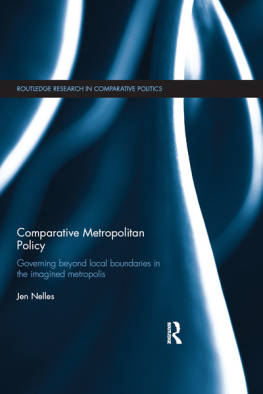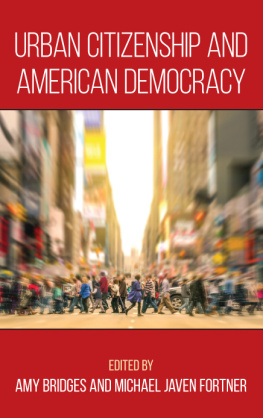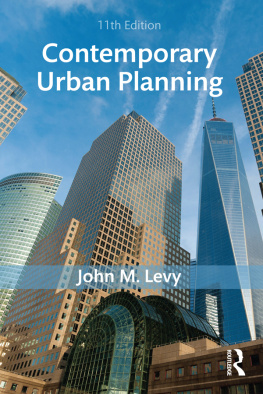

Westview Press was founded in 1975 in Boulder, Colorado, by notable publisher and intellectual Fred Praeger. Westview Press continues to publish scholarly titles and high-quality undergraduate- and graduate-level textbooks in core social science disciplines. With books developed, written, and edited with the needs of serious nonfiction readers, professors, and students in mind, Westview Press honors its long history of publishing books that matter.
Copyright 2015 by Westview Press
Published by Westview Press,
A Member of the Perseus Books Group
2465 Central Avenue
Boulder, CO 80301
www.westviewpress.com
All rights reserved. No part of this book may be reproduced in any manner whatsoever without written permission except in the case of brief quotations embodied in critical articles and reviews. Every effort has been made to secure required permissions for all text, images, maps, and other art reprinted in this volume.
Westview Press books are available at special discounts for bulk purchases in the United States by corporations, institutions, and other organizations. For more information, please contact the Special Markets Department at the Perseus Books Group, 2300 Chestnut Street, Suite 200, Philadelphia, PA 19103, or call (800) 810-4145, ext. 5000, or e-mail .
Designed by Trish Wilkinson
Set in 10 point Adobe Garamond Pro
Library of Congress Cataloging-in-Publication Data
Gottdiener, Mark.
The new urban sociology / Mark Gottdiener, University at Buffalo, Ray Hutchison, University of Wisconsin, Green Bay, Michael T. Ryan. Fifth edition.
pages cm
Includes bibliographical references and index.
ISBN 978-0-8133-4957-2 (e-book) 1. Metropolitan areasUnited States. 2. SuburbsUnited States. 3. Suburban lifeUnited States. 4. UrbanizationUnited StatesHistory 5. Sociology, UrbanUnited States. 6. Sociology, Urban. 7. Urbanization. I. Hutchison, Ray. II. Ryan, Michael T. III. Title.
HT334.U5G657 2014
307.76'40973dc23 | 2014031609 |
10 9 8 7 6 5 4 3 2 1
CONTENTS
Occasionally, a colleague will ask, Say, whats so new about The New Urban Sociology after all these years? It sounded frivolous at first, but we have come to realize that this is meant as a serious question.
So, what is still new about The New Urban Sociology? Our original formulation of the new paradigm dismantled the previous dominant approach of urban ecology grounded in neo-Classical economics with the market of many buyers and sellers as supreme along with its neo-Liberal political and planning prescriptions that weighted market solutions heavily despite government subsidies. The new urban sociology replaced this view with the more realistic one of an economy and political system hegemonically controlled by large, powerful interests that dominate our mixed economy, where government intervention usually favored those powerful interests. It is not a level playing field. To suggest that our view, along with the theory of Henri Lefebvre, and the political economy based on our perspective, are somehow not relevant to better planning, better control over our urban environments, and better management of job creation and profit making cannot be the case. The new urban sociology remains the best explanatory paradigm for the urban crisis, both current and past.
Despite the overwhelming reality of how everyday life is organized today in the United Statesand increasingly in developed countries elsewhereas a regional, expanding space that we call the mutlicentered metropolitan region, many urbanists persist in placing the term the city exclusively at the center of their analysis. They speak of world cities, edge cities, megacities. The immense regional spread of socioeconomic activity with multiple centers of economic activity and diverse forms of residential settlement have taken over many of the functions of the classical, historical central city itself. The City of London is still the financial center of the United Kingdom, but the City of London is but a small part of the city of London, which itself is part of a vast multicentered metropolitan region encompassing myriad residential, business, recreational, and government minicenters. New York City must be considered globally central, but when it is compared to London and Tokyo in the world cities literature, the reference is almost exclusively talking about Manhattan, and even more specifically, a small area of ManhattanWall Street and its attendant services and spin-off businesses. Looming as an immense regional agglomeration outside Manhattan is a vast expanse of urbanized, multicentered space encompassing parts of New Jersey and Connecticut, as well as dozens of New York State areas around the five boroughs of the city. In short, what remains still new is the basic need to grasp the size and internal dynamics of this new form of urban space that we call the multicentered metropolitan region.
Given the alternative approaches advertised by other urban sociology textbooks, we must ask how we can best help our students understand the current economic meltdown and its enduring impact on everyday lifesomething that can be explained directly, easily, and quite usefully by reading The New Urban Sociologys approach to the role of real estate speculation and investment.
It is a great pleasure to produce a fifth edition of this text that began as an idea of Mark Gottdieners in 1991 and was first published three years later. Alarmed that the original publisher planned to offer the third edition at the cost of $100 or more, we arranged for that edition to be put out by Westview in a paperback format. In this fifth edition, we have once again updated the material in previous editions to cover the persisting importance of understanding the new approach in order to explain the failures of the market and influence-controlled government intervention, the persistent and growing pattern of uneven development within metropolitan regions, and the critical need for increased social justice in dealing with persisting social, political, and economic problems of everyday urban life in the massive, multicentered metropolitan region. New cultural forms, new political struggles, new changes in the global positions of countries like India, Brazil, and China, new patterns of global labor sourcing and transnational corporate dynamics, new issues of social justice and environmental concerns, and the like in our urban society continue to make this edition of the New Urban Sociology as relevant today as it was when the first edition came out more than twenty years ago. We hope that it will be as useful in the classroom as have previous versions of this new paradigm.
ACKNOWLEDGMENTS
The development of The New Urban Sociology through five editions has been an extended project. It could not have been accomplished without the crucial help provided by a number of people. We wish to thank friends in academia and beyond for their support: Andrew Austin, Bob Antonio, Karen Dalke, David Diaz, Joe Feagin, Kevin Gotham, Harvey Kay, Bruce Haynes, Chigon Kim, Nestor Rodriguez, Eric Monkkonen, Peter Muller, Sean Ryan, Mario Small, Leonard Wallock, and Talmadge Wright in the United States; Phil Gunn, Lena Lavinas, Sandra Lincioni, Circe Monteiro and Sueli Schiffer in Brazil; Jens Tonboe in Denmark; Lorenzo Tripodi in Germany; Alexandros Lagopoulos and Nikos Komninos in Greece; Mark Clapson and Chris Pickvance in England; Gabrielle Manella and Simone Giometti in Italy; Dorel Abraham in Romania; Lynn Smith in Scotland; Milan Prodanovic and Sonya Prodanovic in Serbia; and Richard Wolff in Switzerland.
Next page







